
Education&ScienceWebinars
Webinar on COVID-19 Global Perspectives
Friday 27 March 2020
- 18:00 (28 March a.m. in the APSR region)
Watch a recording of the webinar on Youtube
This webinar has ended.
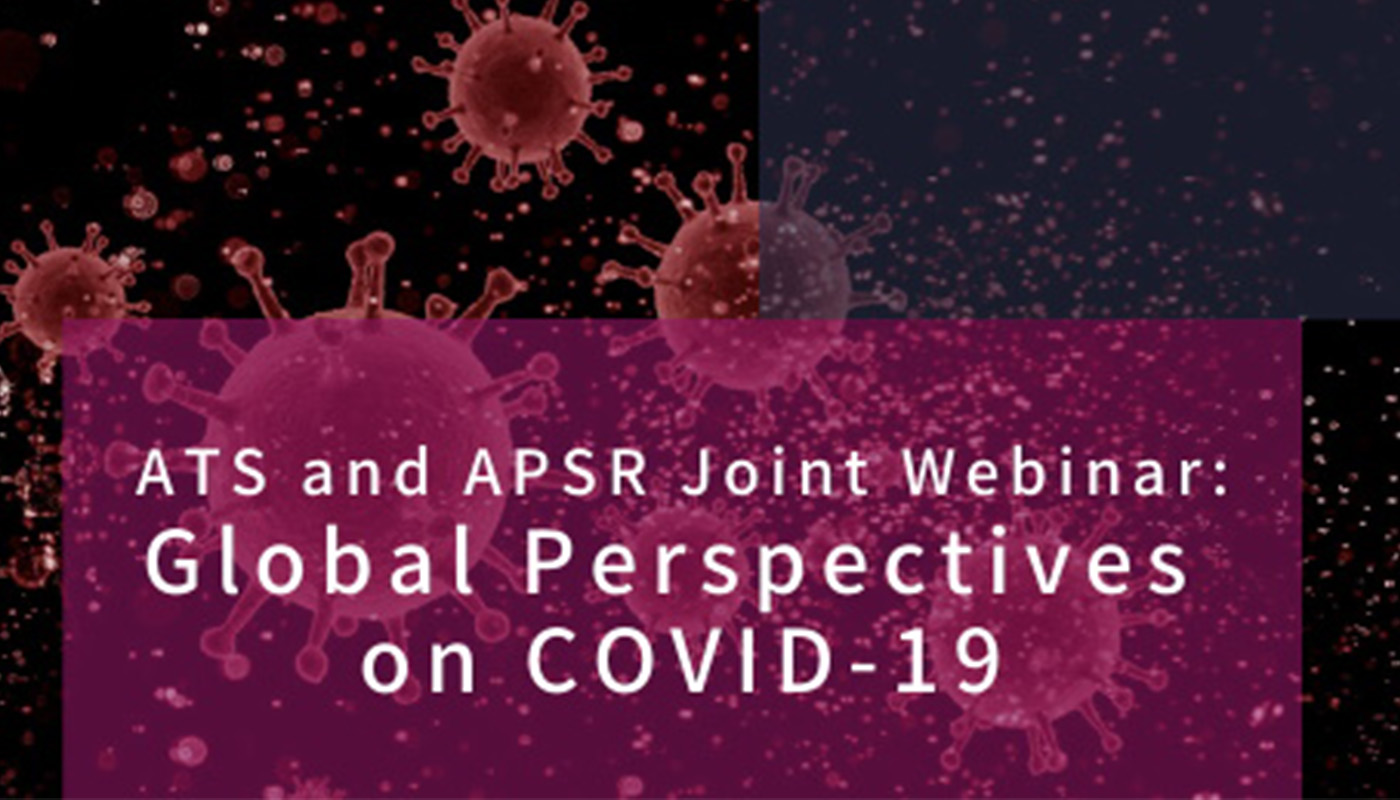
OUTLINE
As the COVID-19 public health crisis unfolds in real-time and the impact is felt all around the world, an ATS-APSR joint webinar Global Perspectives on COVID-19 was held on 27 March at 6 p.m. EDT (early morning on 26 March in the Asia-Pacific region) to learn how your respiratory health colleagues on the front lines of different regions are responding to COVID-19.
This webinar provided a space for respiratory health professionals from around the globe to share their experiences with COVID-19. Participants had the chance to ask questions, discuss, and hear perspectives from practitioners and professors from China, Hong Kong, Singapore, and the Republic of Korea.
Panelists from the APSR

Dr. Yuanlin Song
China
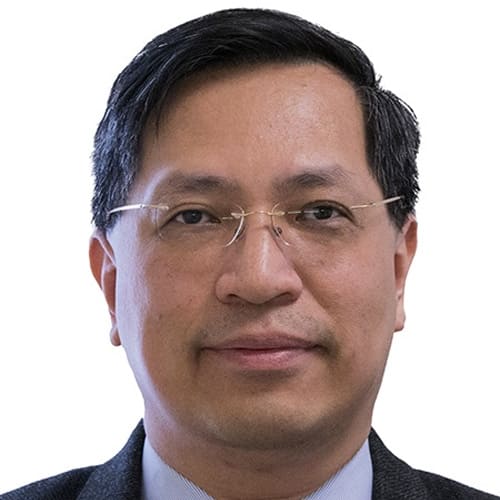
Dr David C L Lam
Hong Kong

Dr David S C Hui
Hong Kong
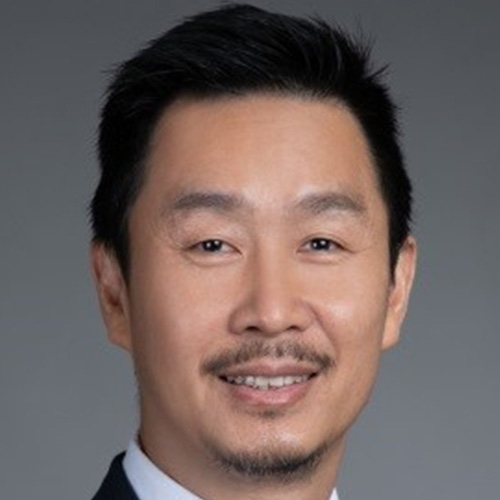
Dr Man-Po Lee
Hong Kong
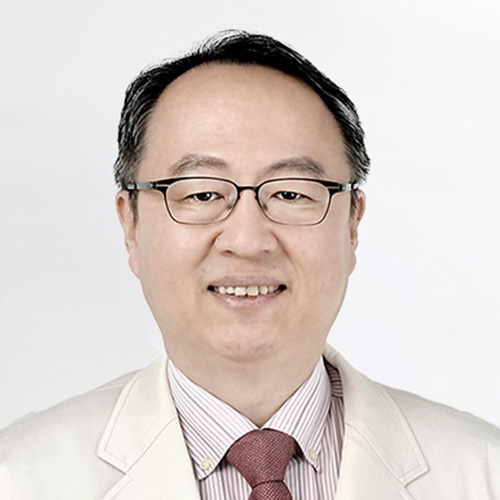
Dr Gee Young Suh
Republic of Korea
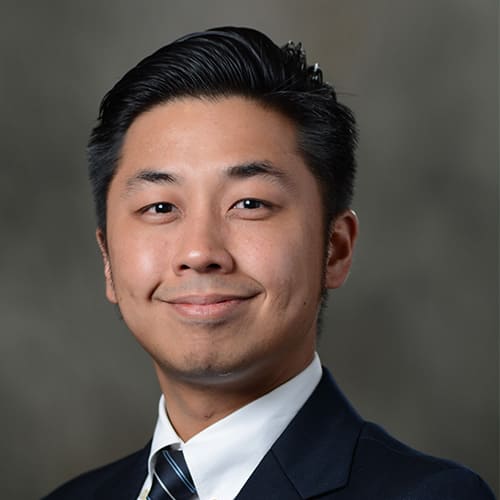
Dr Puah Ser Hon
Singapore
How would you describe the effect of COVID-19 on lung function?
What are the long-term effects of lung function?
What parameters could be considered as predictors for healing progress? FEV1, DLCO?
Dr. Ser Hon Puah’s responds:
We have no data yet and will discuss on the workflow to perform lung function in our labs.
Dr. David CL Lam responds:
We have not done lung function tests or spirometry on these subjects. Just like usual viral pneumonia, we do not expect significant impairment on lung function if the subject recovers completely.
How often did you see the cytokine storm in Chinese patients?
In the US 20% of patients are getting hospitalized, many more than in China.
Dr. Yuanlin Song’s responds:
10-15%
What personal protective equipment do you use for critical care patients? In my institution we use surgical masks for all except patients except for intubation/bronchoscopy.
Dr. Ser Hon Puah’s responds:
We use full PPE – goggles, N95, cap, and gown. (See picture below)
Dr. Yuanlin Song’s responds:
See picture below.
Dr. David CL Lam responds:
In Hong Kong, we use N-95 for aerosol generating procedures, surgical mask for general patient care.
Dr. Suh Gee Young responds:
Our policy is gown covering whole body, goggles/face shield/PAPR as of now.
Why these outcomes are so much better than in Italy, Spain or USA?
Dr. Suh Gee Young responds:
For us, first is the demographics. Around 1/3 of confirmed cases are from young adults less than 30 years old. Also because we were close to China and had first-hand experience of dangers of coronavirus due to 2015 MERS epidemic, the society as a whole was very careful about defending ourselves against SARSCoV2. Early establishment of confirmatory tests and aggressive testing with containment measures and social distancing done from the get-go including universal wearing of masks helped us to contain the number of confirmed cases below our capacity.
Lack of personal protective equipment supplies is a big problem. What are others doing to get the most out of the supplies they have?
Dr. Ser Hon Puah’s responds:
We are now allowing extensive use of goggles and N95 masks – wear once, complete the rounds, then toss the mask and wipe down the goggles.
Dr. David CL Lam responds:
In Hong Kong, we try to cut down elective clinical procedures to the minimum, and schedule bronchoscopies to the same sessions if possible so attending health care professionals do not need to change N-95 within the same sessions unless they are obviously contaminated.
Dr. Suh Gee Young responds:
We are reissuing the PAPR hoods.
How different are past SARS and present COVID-19,particularly hypercoagulability in the vessels? I ask for your impression and clinical data if you have it.
Dr. Ser Hon Puah’s responds:
We have had 1 DVT of 40 patients thus far. SARs appears to have a higher risk of thrombosis as compared to our cohort.
Dr. David CL Lam responds:
My impression is that COVID-19 tends to milder in relatively younger patients, but more severe in the elderly patient group and those with multiple medical comorbidities.
Are the two dead cases [mentioned in Singapore] aged patients?
Dr. Ser Hon Puah’s responds:
One in his 60s and the other in her 70s.
What is your advice with asthmatic patients, in particular those with severe eosinophilic asthma. Would you recommend continued OCS use, biologic (such as anti-IL-5), or would you have a preference to switch from one to the other? Is there a preventive measure or post-COVID-19 difference in your response?
Dr. Ser Hon Puah’s responds:
Thus far we have not seen many exacerbations of asthma from COVID-19 infections. For now, for the lack of evidence, I don’t think I will stop the long term management of severe asthmas.
Dr. David CL Lam responds:
I would suggest no significant changes are needed for the usual care of asthmatic patients, and asthmatic patients should follow the same preventive measures as for all other patients.
Dr. Suh Gee Young responds:
There is a report from Japan which suggests that steroid inhalers may be actually helpful in COVID-19. Since, there is no evidence that stopping asthma medication is necessary I would continue him on his medication.
What information is there about the immune status of those that have recovered? Any information about the efficacy of passive immunization?
Dr. Suh Gee Young responds:
refer to this article: https://jamanetwork.cm/jour nals/jama/fullarticle/2763983
Are you seeing any particular differences in clinical presentation of COVID-19 among individuals with COPD vs. those without? Do you have any different management recommendations regarding treatment of. those with COVID and COPD—vis-à-vis corticosteroid use. What are your criteria for hospitalization for those with underlying significant chronic lung disease?
Dr. Ser Hon Puah’s responds:
We still hospitalize them and swab (x2) those who have new x-ray changes. All patients with some possible pneumonia are classified under the Enhance Pneumonia Surveillance (EPS) group – who will get 2 swabs and deisolate once negative.
Dr. David CL Lam responds:
I don’t see any difference in the management, in terms of clinical management and prevention, between COPD patients and other patients with chronic lung diseases.
When a patient is recovered with remission of symptoms, do you need to retest them prior to discharge?
Dr. Ser Hon Puah’s responds:
Our ID team ensures at least 2 negative swabs and [that patients are] asymptomatic before allowing for discharge. Although we don’t really know the viability of the virus, we still test them until we know more.
Dr. David CL Lam responds:
Yes, it’s required.
Dr. Suh Gee Young responds:
Our policy for discharge from a controlled environment is 2 negative PCR’s 24 hours apart. If the patient is otherwise well, except for the PCR(+) status, in some local areas, he would be transferred to a treatment center.
Do you use paralysis within 48h of Mechanical Ventilation?
Dr. Ser Hon Puah’s responds:
Yes, especially if there are desynchrony and poor PF ratios.
Dr. Suh Gee Young responds:
Not always.
Do you support more than one patient on a ventilator?
Dr. Ser Hon Puah’s responds:
Thankfully, we did not have to do this yet.
Dr. David CL Lam responds:
No.
Dr. Suh Gee Young responds:
No, I too thankfully have not.
If you have several critical patients, but one ventilator, how do you decide who gets the ventilator? How do you triage these patients?
Dr. Ser Hon Puah’s responds:
Again, thankfully we have not come to this state yet.
Dr. Suh Gee Young responds:
I don’t have personal experience, but please refer to this article: https://www.nejm.org/doi/full/10.1056/NEJMp2005689
Can this virus be spread via air conditioning systems of modern buildings?
Dr. David CL Lam responds:
There is so far no such evidence to support this.
How often is BAL required for diagnosis, and is it worth the risk?
Dr. Yuanlin Song’s responds:
Because of the high risk it is required less than 1% of the time.
Dr. David CL Lam responds:
No, we rely on NPA/S.
Dr. Suh Gee Young responds:
We do not routinely use it.
If [a patient’s] nasal swabs are negative, but lower airway may still be positive, how long should they be isolated for after the first negative swab?
Dr. Suh Gee Young responds:
Our routine practice is 2 negative PCR’s in a row from both the upper and lower respiratory tract specimen.
What is the dosage of HCQS for prophylaxis and for treatment?
Dr. Yuanlin Song’s responds:
Normally 400 bid*1d and 400 qd*9d
What is the Chinese medicine for Coronavirus?
Dr. Yuanlin Song’s responds:
Lianhua qingwen granule may help in the treatment. Several studies about Chinese medicine in COVID-19 Virus are on the way.
Which mode of ventilation do you suggest as per your experience?
Dr. Ser Hon Puah’s responds:
I don’t think that’s any is superior. Just employ lung protective ventilation strategies.
Dr. Yuanlin Song’s responds:
It depends on the severity level of patients. We recommend the sequence of high-flow oxygen non-invasive ventilation, and invasive ventilation.
Dr. Suh Gee Young responds:
The mode that you are most comfortable with. The principles of lung protective ventilation should be adhered to. Most are not really difficult to ventilate.
Are patients with pulmonary tuberculosis on anti- tuberculosis treatment a high risk group?
Dr. Ser Hon Puah’s responds:
No data on this, and we have not seen any coinfections.
Dr. Yuanlin Song’s responds:
There is still no reports on these patients.
Dr. David CL Lam responds:
No evidence to support this so far.
Do you find nebulization has role for intubated patients? If yes which medication for nebulization and at what frequency?
Dr. Ser Hon Puah’s responds:
Not for COVID-19 alone. For patients with bronchospasm, we administer “Dry nebs” i.e.
salbutamol puffs via aerochamber and avoid wet nebulization.
When do you recommend changing patient to prone position? Any shortness of breath?
Dr. Ser Hon Puah’s responds:
We prone patients based on the PROSEVA recommendations.
Dr. Yuanlin Song’s responds:
Patients with ARDS, especially those with hypoxemia
Dr. Suh Gee Young responds:
Same as other ARDS
What kind of tests are you using?
Dr. Suh Gee Young responds:
RT-PCR kits approved by Korean CDC.
Virus detection? IgM detection?
Dr. Suh Gee Young responds:
Korea currently does not have serology tests for SARS- CoV2
What is the role for bilevel ventilation (non-invasive)?
Dr. Ser Hon Puah’s responds:
We have avoided NIV for patients with COVID19
Is there a role for non-invasive ventilation?
Dr. Ser Hon Puah’s responds:
We have avoided NIV for patients with COVID19
Dr. David CL Lam responds:
Per clinical indication but in airborne infection isolation facility.
Can you comment on the role of CT vs. Chest Radiographs in diagnosing, triaging and treating COVID- 19? While it seems as if CT had an important role in China, here in the US there is largely the belief that CT should be limited.
Dr. Ser Hon Puah’s responds:
We have also limited our CTs in Singapore, unless we are looking for an alternate diagnosis.
Dr. Suh Gee Young responds:
We do not routinely do CT in confirmed cases since it does not change our therapy. But findings on CT may point to a diagnosis of COVID-19. For bedside assessment, lung sono may be useful. Even if CXR is negative, there could be B-lines which suggest subtle pneumonia.
Dr. Song for how long did you use the steroid?
Dr. Yuanlin Song’s responds:
3-5 days.
What is the overall experience with CPAP?
Dr. Ser Hon Puah’s responds:
We have avoided NIV for patients with COVID-19
Any risk for asthma or COPD patients who were using ICS as part of their treatment?
Dr. Ser Hon Puah’s responds:
I don’t think we have enough information.
What happens to the dogs that test positive? Symptomatic? Can dogs transmit the virus?
Dr. David CL Lam responds:
No symptoms. No evidence for such transmission yet.
Thanks Dr Lam! Interesting low mortality and controlled scenario in Hong Kong. Could acquired immunity to previous Coronavirus e.g. SARS have influenced this?
Dr. David CL Lam responds:
We believe it is [due to] the containment strategy before and because citizens practice personal hygiene, restrict travel and gathering. We don’t think there is a relation with previous SARS.
Do you see a better effect of hydroxychloroquine when azithromycin is added (as see in a study reported by a French group)?
Dr. David CL Lam responds:
We have not tried that in Hong Kong.
Do you test contacts for all confirmed patients even if contacts are asymptomatic?
Dr. David CL Lam responds:
Yes if possible.
What PPE are your frontline staff wearing? How did you conserve PPE if at all?
Dr. Ser Hon Puah’s responds:
Goggles, N95, cap and yellow gown.
Dr. David CL Lam responds:
In Hong Kong, we use N-95 for aerosol generating procedures, surgical mask for general patient care.

PPE used in Singapore (two photos from the left provided by the panelist Dr. Ser Hon Puah)
PPE used in China (photos provided by the panelist Dr. Yuanlin Song)
Does the data accumulated and experience indicate that patient’s infected with SARS-Cov-2 in respiratory failure who require mechanical ventilatory support have a mortality rate of greater than 90% ?
Dr. Ser Hon Puah’s responds:
Not for us in Singapore. Our mortality rate is at 5% for those who required intubation. We suspect it is early intubation that helped thus far.
If a patient tests negative but clinical suspicion remains, did you discontinue precautions, decrease level of precautions (surgical masks instead of N95, etc.), or continue use of full PPE? Also If you reduced or discontinued precautions, do you restart precautions if the patient gets an aerosol-generating procedure?
Dr. Ser Hon Puah’s responds:
Our ID colleagues will continue testing while in full PPE.
Dr. David CL Lam responds:
Always take universal precaution with clinical suspicion.
Dr. Suh Gee Young responds:
We have a panel of infection, pulmonary, critical care physicians and decide whether the patient can be released from isolation.
Given reports from Italy, any experience in your hospitals of using Angiotensin II pressor in shock in COVID-19 patients?
Dr. Suh Gee Young responds:
It is not licensed in Korea.
Do the patients have secretions? Did you use any airway clearance techniques?
Dr. Suh Gee Young responds:
Similar to other patients.
Does early attention change the prognosis of the patients? Some countries are recommending to not seek for attention unless you experience alarming symptoms like shortness of breath.
Dr. David CL Lam responds:
We believe early attention is important.
Dr. Suh Gee Young responds:
Some patients died while awaiting hospitalization in Daegu area where the pandemic has hit hardest. Even severely hypoxemic patients may have minimal Sx especially in older patients.
Are there any observations on recovered patients? How long are these observations? Is there any information on immune response in recovered patients?
Dr. Yuanlin Song’s responds:
Observation time for recovered patients is 14 days. They have a specific antibody but overall immune function is still weak.
When do you discharge patients?
Dr. Ser Hon Puah’s responds:
I can only comment that we discharge them from ICU to the wards when they are only on minimal oxygen supplementation because they tend to desaturate on exertion.
Dr. Suh Gee Young responds:
Two negative RT-PCR tests 24 hours apart and medically stable.
Is a repeat negative COVID-19 swab test required before discharging COVID-19 confirmed patients?
Dr. Ser Hon Puah’s responds:
Yes for us.
Among patients who were ventilated, how was the weaning done? What were the criteria before weaning aside from the usual ones? Is a negative repeat test and normal CRP and Ferritin required?
Dr. Suh Gee Young responds:
We use the same physiologic criteria for other ventilated patients.
If NFNC is used, we are concerned regarding aerosol generation. Is there any data/experience regarding type of PPE that is appropriate (assuming we will cohort these patient on a ward) and rates of health care worker infection despite PPE. This is a question for the whole panel.
Dr. Ser Hon Puah’s responds:
We did environmental swabs for a patient used HFNC (about 18 hours after intubation) and the swabs were negative. I think we still need more studies on this.
Dr. Suh Gee Young responds:
We have used HFNC, and it may have prevented intubation in some patients.
Which medications do you use? hydroxychloroquine? tocilizumab?
No answer
Can dogs transmit?
Dr. Yuanlin Song’s responds:
Pets can be potential infection source due to the aerosol in their skin. Hand hygiene and wearing a mask are necessary.
Air exchanges in room? How important??
Dr. Ser Hon Puah’s responds:
I personally feel it is important as our environmental swabs have been negative. Our ID colleagues have submitted their manuscript on this and we are looking forward to its publication.
Negatively ventilated rooms: should these be individual rooms? I know of some large spaces such as large multi- room ICUs which are negatively ventilated. Thoughts about single vs. large area of negatively ventilated engineering?
Dr. Ser Hon Puah’s responds:
Ours are managed in single negative pressure isolation rooms, but because of the larger numbers we are starting to cohort the well patients in the general ward.
What are your criteria to admit?
Dr. Ser Hon Puah’s responds:
We bring patients down to ICU early – rapid increase in oxygen requirements or/and on 40- 50% venturi mask for observation.
Dr. Yuanlin Song’s responds:
All confirmed cases will be admitted in isolation wards. Patients with hypoxemia or having infiltration on CT should be admitted in the hospital.
What do you think about CPAP usage? Before mechanical ventilation?
Dr. Ser Hon Puah’s responds:
For now, we are not practicing that.
In HK hydroxychloroquine is the last therapy before we heard that this was the first choice medicine. What shoul we use? please comment.
Dr. David CL Lam responds:
It’s not in routine use to treat COVID-19 in Hong Kong.
It’s not in routine use to treat COVID-19 in Hong Kong.
Dr. David CL Lam responds:
We identified and contained cases before, and most citizens practiced personal hygiene, and reduce travel. We stopped schooling and gatherings to avoid community spread.
Did you find any reinfections?
Dr. David CL Lam responds:
No.
Dr. Song, what are your thoughts of CT chest being a more sensitive test for severe COVID-19 compared to RT-PCR?
Dr. Yuanlin Song’s responds:
RT-PCR is the gold standard. Patients with typical CT feature should be followed up. Both of them are important diagnostic tools and need combination for suspected cases
What is the false negative rate of nasopharyngeal swab?
Dr. Yuanlin Song’s responds:
There is still no data for this rate.
How much testing has been performed in Hong Kong?
Dr. David CL Lam responds:
We are increasing the number.
How is the efficacy and how useful is the IgG/IgMRapid test kit?
Dr. Yuanlin Song’s responds:
This assay is used as an assistant test for suspected cases not for regular screening.
Do you recommend monitoring oximetry at home to detect evolution to more severe presentation?
Dr. Ser Hon Puah’s responds:
We have been admitting all positive patients so far. I think the deterioration can be rapid, so for now, I wouldn’t recommend this.
Dr. Yuanlin Song’s responds:
Yes, it’s an easy method.
In Shanghai and Hong-Kong, have you observed late worsening of the clinical picture? Cases that appear mild/moderate within the first 5 days or so, and suddenly worsened markedly?
Dr. David CL Lam responds:
We have one of these out of the four we have so far, but we have no idea how it could have happened.
Dr. Suh Gee Young responds:
Our experience is that, if the patient start to go up on O2 requirement, you should observe him very carefully.
is there any transmission to newly delivered babies?
Dr. Yuanlin Song’s responds:
There are four children cases in Shanghai ranging from 7- 72months. There is infant infection reported.
What is the mode of ventilation commonly used ?
Dr. Suh Gee Young responds:
We usually use Pressure Assist Control.
High D-dimer without elevation of other bio markers? Still high risk?
Dr. Yuanlin Song’s responds:
Yes, D-dimer is a high risk factor for ARDS and mortality
Which are the symptoms that most lead people to hospital?
Dr. Yuanlin Song’s responds:
Fever, cough, diarrhea and dyspnea.
Hello. I’m from Mozambique. I’m a pneumologist in a public hospital. What are we going to do with patients with asthma who use inhaler corticosteroids and have coronavirus?
Dr. Ser Hon Puah’s responds:
In Singapore, we will still continue the inhaler medications for our asthmatics and COPD patients.
Did Shanghai experience any risk factors for patients previously on ACE-I, ARB, or NSAIDs?
Dr. Yuanlin Song’s responds:
There is higher COVID-19 risk for patients with high blood pressure, and we still have no final data for patients who use these kinds of medicine.
repeat testing in patients with initial negative swab?
Dr. Suh Gee Young responds:
Some are being done, especially pneumonia cases who have bilateral GGO.
How many cases are asymptomatic and swab positive PCR in South Korea?
Dr. Suh Gee Young responds:
There seems to be a lot of positive PCR in asymptotic contacts in Korean cases. The government has not officially said what % of patients are asymptomatic.
Turn around time for PCR COVID-19 swab in S Korea?
Dr. Suh Gee Young responds:
Around 6 hrs.
Is there a significant risk for letting patients who are PCR positive go home and isolate there?
Dr. Suh Gee Young responds:
In Korea, we put the patient in the hospital or treatment centers.
Is re-infection by the coronavirus being observed in discharged patients? If yes, what is the percentage?
Dr. Yuanlin Song’s responds:
There is still no such case in Shanghai because of the strict criteria of discharge. Only a few such cases in other part of China.
Dr. Suh Gee Young responds:
There are some newspaper articles, but it seems very rare.
What is the percentage of asymptomatic patient in all COVID-19 patients? Some report said 1 % and the other said 50%. Should we pay attention to find out these asymptomatic patients for public concern?
Dr. Suh Gee Young responds:
There seems to be a lot of positive PCR in asymptotic contacts in Korean cases. The government has not officially said what percent of patients are asymptomatic.
Given the concern of potential spreading infection, should we use NIPPV in COVID-19 patients with early respiratory failure? SCCM and AARC suggest using HFNC over NIPPV (weak recommendation). But BTS suggests CPAP over HFNC.
Dr. Ser Hon Puah’s responds:
We have been trying to avoid both.
Is there some role of Oseltamivir in treatment of Covid- 19 ?
Dr. Ser Hon Puah’s responds:
We don’t think so and stop once influenza PCRs are negative.
Dr. Suh Gee Young responds:
South Korea is not recommending use of Oseltamivir.
Did you observe any comorbidity with asthma and what is the survival rate?
Dr. Yuanlin Song’s responds:
There are only a few such cases and airway hypersecretion can make the treatment more difficult.
PPE use and replacement: must a respirator be replaced after being used once or daily, and can approved surface disinfectants be used to sanitized respirators outside?
Dr. Ser Hon Puah’s responds:
We change the filters every 2-3 days and try not to break the circuit. We don’t change the ventilators once started on a patient.
The American Thoracic Society (ATS) supports the sharing of COVID-19 experiences and recommendations of our members and other clinical and scientific resources in ATS websites, social media and communications. Opinions expressed and resources shared may not have been reviewed by the ATS prior to distribution through ATS channels, or reflect official positions of the ATS, unless it is explicitly noted as a result of official ATS approval. References to specific commercial entities (companies) or products do not reflect review or endorsement by the ATS unless it is explicitly noted as a result of official ATS approval.



